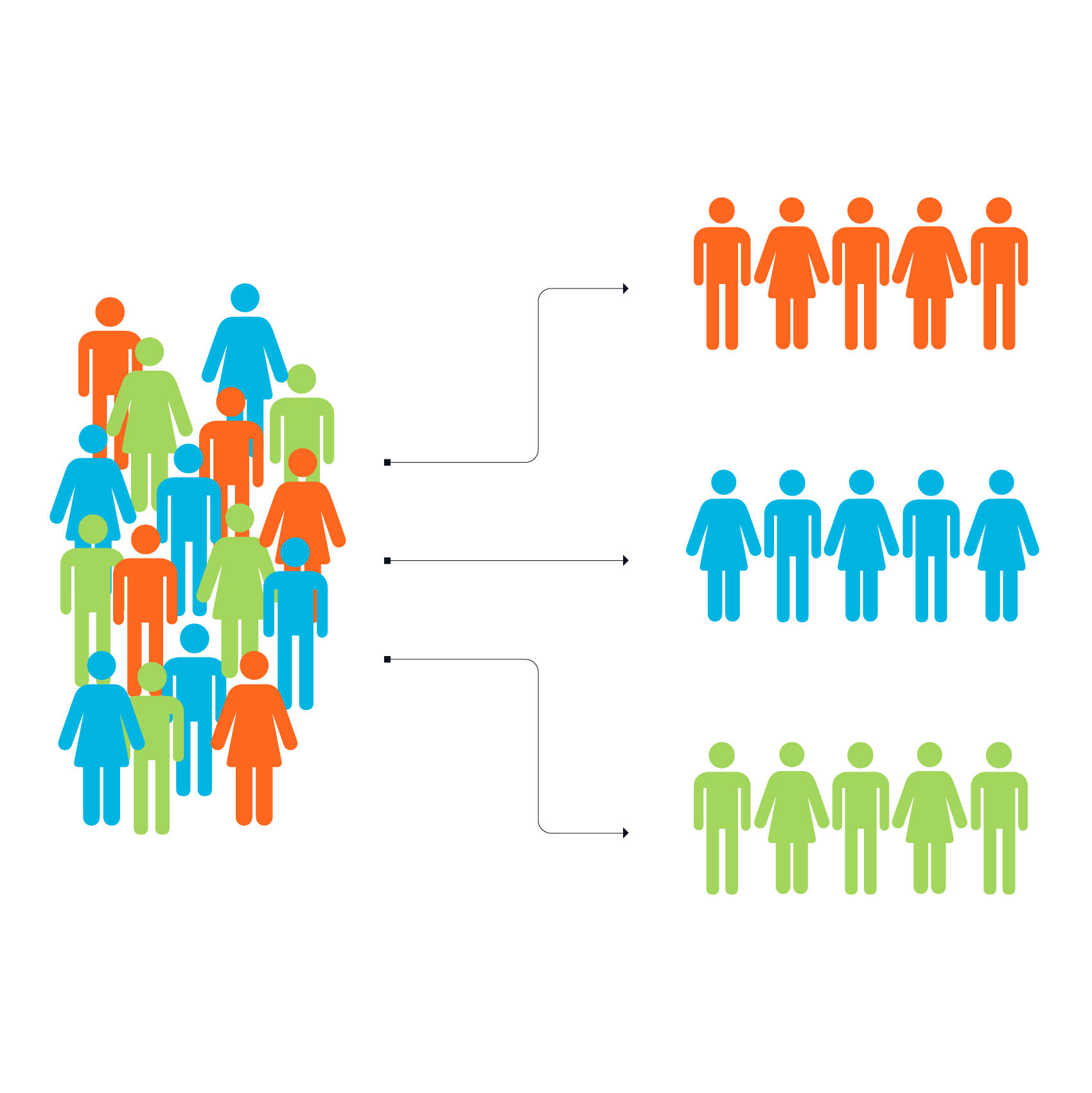In today’s competitive business landscape, understanding your target audience is more critical than ever. One effective method to achieve this is through audience segmentation analysis. This process involves dividing your customer base into distinct groups based on various characteristics, allowing businesses to tailor their marketing efforts and strategies to meet the unique needs of each segment.
What is Audience Segmentation Analysis?

Audience segmentation is a marketing strategy that involves dividing a heterogeneous market into smaller, more homogenous groups based on shared traits, behaviors, interests, and preferences. By understanding the specific attributes of each segment, businesses can create highly targeted and personalized marketing campaigns.
Why Audience Segmentation is Crucial for Businesses
Audience segmentation provides businesses with valuable insights into their customer base. It allows them to move beyond generic marketing approaches and craft tailored messages that resonate with specific customer groups. Here are some reasons why audience segmentation is crucial:
- Increased Relevance: Tailored messages resonate more with customers, increasing the chances of conversion.
- Efficient Resource Allocation: Targeting specific segments helps allocate resources wisely, avoiding wastage.
- Improved Customer Retention: Personalized experiences foster customer loyalty and retention.
- Better Product Development: Understanding customer preferences informs product development and enhancements.
- Competitive Advantage: Targeted marketing gives businesses a competitive edge in the market.
Types of Audience Segmentation
There are several ways to segment your audience. Let’s explore some common types:
1. Demographic Segmentation
This method categorizes customers based on demographic factors like age, gender, income, education, and occupation. It helps businesses tailor their marketing efforts to specific age groups or genders, maximizing the impact of their campaigns.
2. Geographic Segmentation
Geographic segmentation divides the audience based on their location, such as country, region, city, or climate. This is particularly useful for businesses with location-specific products or services.
3. Psychographic Segmentation
Psychographic segmentation delves into the customers’ lifestyles, interests, values, and personalities. It helps identify emotional triggers that influence purchasing decisions.
4. Behavioral Segmentation
Behavioral segmentation focuses on customer actions, such as past purchases, brand interactions, and engagement. This enables businesses to target customers based on their buying habits and engagement levels.
Steps to Conduct Audience Analysis and Segmentation
To perform audience segmentation effectively, follow these essential steps:
1. Define Your Objectives
Clearly outline the goals you want to achieve with the segmentation analysis. Whether it’s improving customer retention or expanding market reach, having clear objectives guides the entire process.
2. Collect Relevant Data
Gather data from various sources, including surveys, website analytics, social media insights, and customer feedback. This data will form the basis of your segmentation analysis.
3. Identify Segmentation Variables
Determine the variables you’ll use to categorize your audience. These may include age, location, interests, purchase history, and more.
4. Create Audience Segments
Using the collected data and segmentation variables, group your audience into distinct segments. Each segment should share common characteristics and behaviors.
5. Analyze and Validate Segments
Thoroughly analyze each segment to ensure they are distinct, substantial, and viable. Validate the segments by comparing them against real-world customer interactions.
The Benefits of Audience Segmentation Marketing
Audience segmentation offers a plethora of benefits for businesses looking to enhance their marketing efforts:
1. Personalized Marketing Campaigns
By understanding each segment’s unique preferences, businesses can create personalized marketing messages that connect with customers on a deeper level.
2. Enhanced Customer Engagement
Segment-specific campaigns drive higher customer engagement and interaction, leading to increased brand loyalty.
3. Improved ROI and Conversion Rates
Targeted marketing ensures resources are utilized effectively, resulting in a better return on investment (ROI) and higher conversion rates.
4. Better Product Development
Insights from audience segmentation help businesses develop products that cater to the specific needs and desires of their target customers.
Conclusion
In conclusion, audience segmentation analysis is an invaluable tool for businesses looking to boost their marketing strategies and engage with their customers more effectively. By understanding the unique attributes and preferences of different customer segments, businesses can create personalized and targeted marketing campaigns that drive better results.
If you’re ready to take your marketing efforts to the next level and want to see how audience segmentation can transform your business, don’t hesitate to request a demo from AIM Technologies. Our team of experts will guide you through the process and show you how our advanced tools can help you achieve marketing success like never before.
FAQs
What is the main goal of audience segmentation?
- The main goal of audience segmentation is to divide a heterogeneous market into smaller, more homogenous groups based on shared traits, behaviors, interests, and preferences.
What are some common types of audience segmentation?
- Common types of audience segmentation include demographic segmentation, geographic segmentation, psychographic segmentation, and behavioral segmentation.
How does audience segmentation benefit businesses?
- Audience segmentation benefits businesses by enabling personalized marketing campaigns, efficient resource allocation, improved customer retention, better product development, and competitive advantage.
What steps are involved in conducting audience segmentation analysis?
- The steps for conducting audience segmentation analysis include defining objectives, collecting relevant data, identifying segmentation variables, creating audience segments, and analyzing and validating the segments.
What tools and techniques can businesses use for audience segmentation analysis?
- Businesses can use various tools and techniques such as data analytics software, customer surveys, social media insights, and customer feedback to perform audience segmentation analysis effectively.




